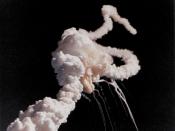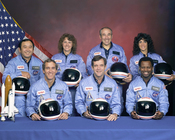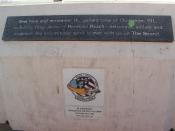The Challenger Explosion
It was a cold day in Cape Canaveral, Florida on January 28, 1986. The launch of the space shuttle Challenger was to be made that day, one that would go down in history. It did, unfortunately for all the wrong reasons.
The space shuttle Challenger launched that day at 11:38 a.m., and everything seemed to be going smoothly. That is, until seventy-three seconds after launch, 1,977 miles per hour, ten miles up, and eight miles downrange, the Challenger exploded, killing all seven crew members. This has been characterized as the worst disaster in the American space program. When the videotapes were reviewed of the explosion, an orange ball of fire can be seen at the base of the Challenger's external fuel tank. At lift-off, this tank held a half-million gallons of liquid hydrogen and oxygen used to power the shuttle's three main engines during the climb to space.
Then, another spark of fire can be seen around the tank, then shortly after, an intense ball of fire burst out and the spacecraft was immediately swallowed up in a giant cloud of flame and smoke. The solid-fuel rocket boosters veered off in opposite directions, offering up a photograph that will haunt NASA for the rest of its days.
After the explosion, debris fell into the ocean for over an hour. The area in which the debris fell extended thirty miles out to sea, was deemed unsafe to search until the majority of debris had returned to earth. By nightfall, it was quite evident that no member of the crew had survived. The search teams were finding aluminum fragment measuring ten, twelve, and even fifteen feet. Almost six hundred pounds of debris was recovered from the one hundred and ten ton shuttle were recovered the next day.
The seven-person...


